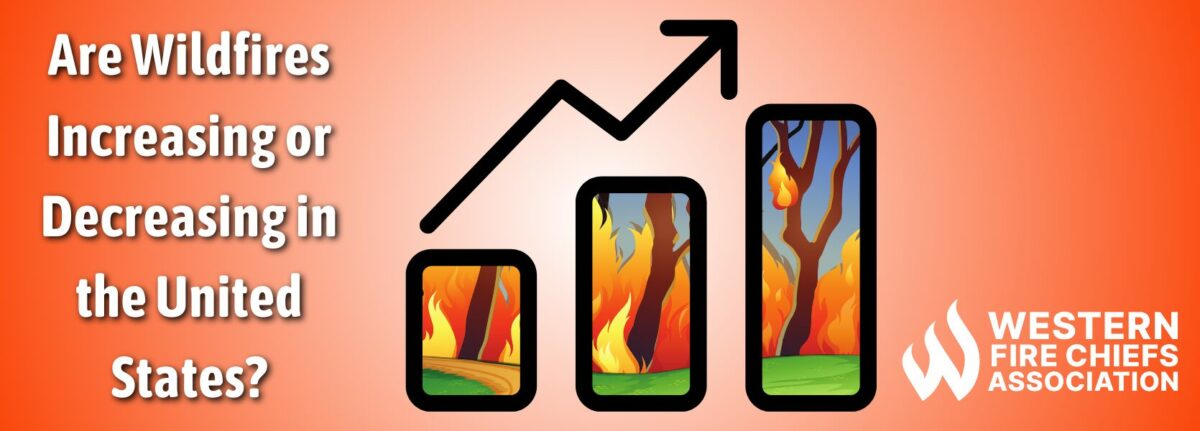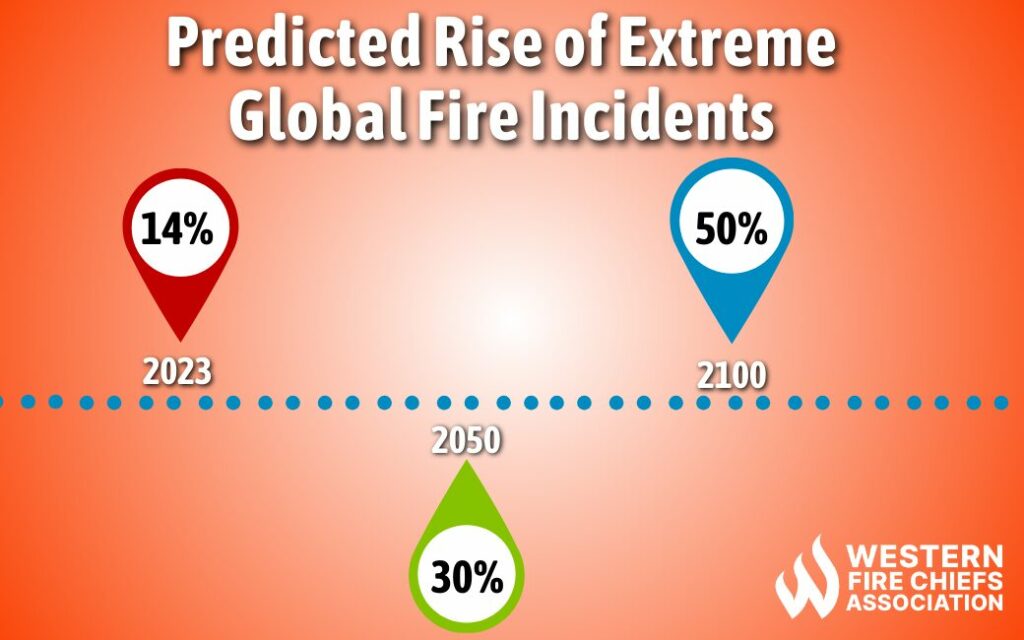Fire Pit Safety Tips
Stay safe around the campfire with tips from the Western Fire Chiefs Association. Learn essential precautions and practices for a worry-free outdoor campfire.
Are wildfires increasing or decreasing over time? Learn how climate change has impacted wildfire trends with guidance from the Western Fire Chiefs Association.
Published:March 5, 2024
Edited:April 14, 2024

Are wildfires increasing or decreasing over time? Learn how climate change has impacted wildfire trends with guidance from the Western Fire Chiefs Association.
The United States has seen an increase in acreage burned by wildfires each year since the 1980s, but does this mean the number of wildfires is increasing?1 Today’s wildfires are burning nearly twice as much tree cover as they did in 2004, resulting in an additional three million hectares of tree cover loss per year.2
A wildfire is defined as an unplanned and unwanted fire burning in a natural area.3 All fires require three elements in order to burn: fuel, oxygen, and heat, also known as the fire triangle. Here are some of the leading factors that influence wildfires:
Climate Change: Climate change refers to the increasing temperatures, alterations in precipitation patterns sea levels, and other aspects of Earth’s climate system. The temperature of the Earth’s surface has been increasing in recent years. As the temperatures increase, the moisture levels drop, creating conditions conducive to the ignition and spread of wildfires. Climate change also causes the fires to burn larger and more intensely due to the extremely dry fuels feeding the fire.4
Human Activities: Humans cause 89% of wildfires each year.5 Human causes of wildfires include equipment malfunction, discarded cigarettes, unattended campfires, burning debris, burning fossil fuels, vehicles, prescribed burns, and arson.
Natural Factors: Wildfires can be ignited by natural events such as lightning strikes, especially in dry areas where the fire can burn through fuel quickly. Additionally, with their large release of hot material, volcanic eruptions can ignite fires in the surrounding area.
Global warming pertains to the increased rise in Earth’s average surface temperature, largely caused by human activity, such as burning fossil fuels and deforestation. These practices emit greenhouse gases like carbon dioxide (CO2), methane (CH4), and nitrous oxide (N2O) into the atmosphere. These gases trap heat, resulting in a gradual increase in global temperatures over time.6 Recent data on fire and trends suggests that global extreme fire incidents could rise by up to 14% by the year 2030, 30% by 2050, and 50% by the end of the century.11 The impact of global warming is seen particularly in the western United States where record-setting wildfires have occurred in recent years. 14 of the 20 largest wildfires on record have been in California over the past 15 years.7

Historical trends show fires getting worse across the globe. The amount of land burned annually by wildfires has increased, despite a decrease in the frequency of wildfire occurrences. During the 1990s, there was an average of 3.3 million acres burned per year due to approximately 78,600 fires. Since 2000, an annual average of 70,025 wildfires have burned an annual average of 7.0 million acres, more than double the average burned in the 1990s.8 The shift in conditions is attributed to drier fire fuel, largely influenced by climate change. Average annual global temperatures have increased steadily since the 1960s, with 10 of the warmest years on record all occurring in the past decade. Furthermore, each month of 2023 fell within the top 7 warmest temperatures on record with June through December in 2023 being the hottest on record.9
The 2020 California wildfire season is on record as California’s worst fire season in history. More than 4.3 million acres were burned, 33 lives were lost, and nearly 10,000 individual fires were recorded.10 If you find yourself living in a fire-prone area consider utilizing these resources:
What To Do if You Live in a Wildfire Prone Area | WFCA
Stay safe around the campfire with tips from the Western Fire Chiefs Association. Learn essential precautions and practices for a worry-free outdoor campfire.
Discover essential firework safety tips to ensure a dazzling display without accidents. Learn how to celebrate responsibly with expert guidance from WFCA.
Explore the role of AI in wildfire prediction with guidance from the WFCA. Learn how advanced algorithms and data analytics enhance early detection and response.